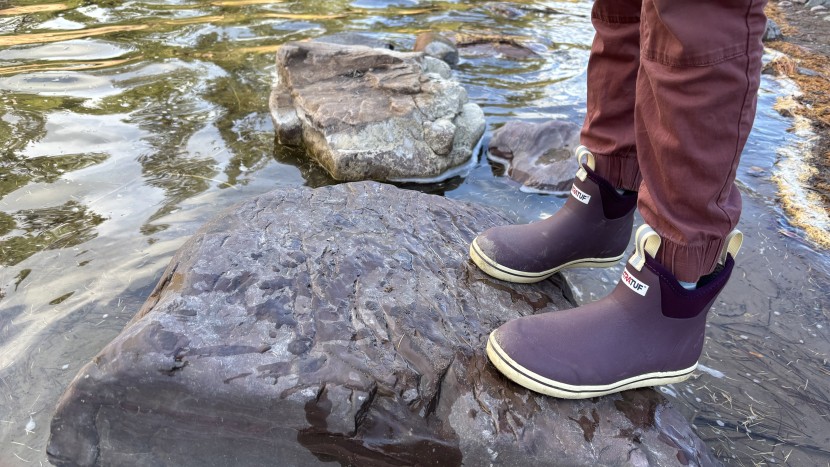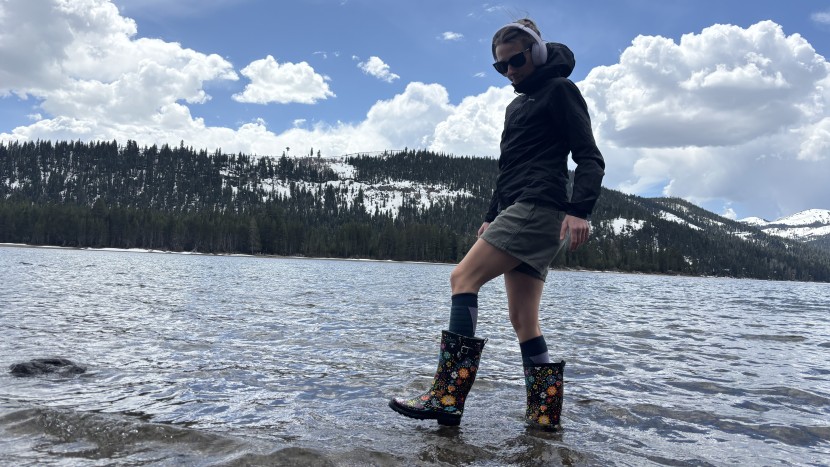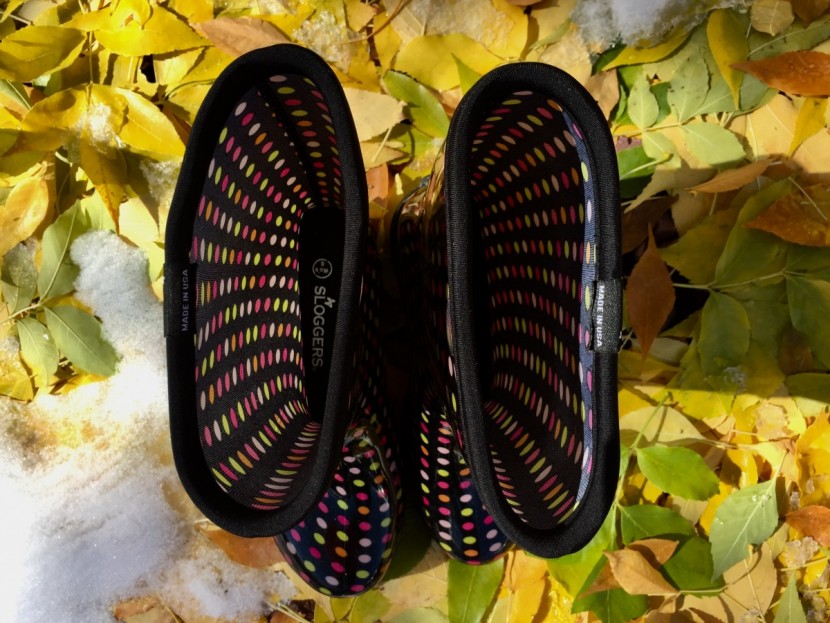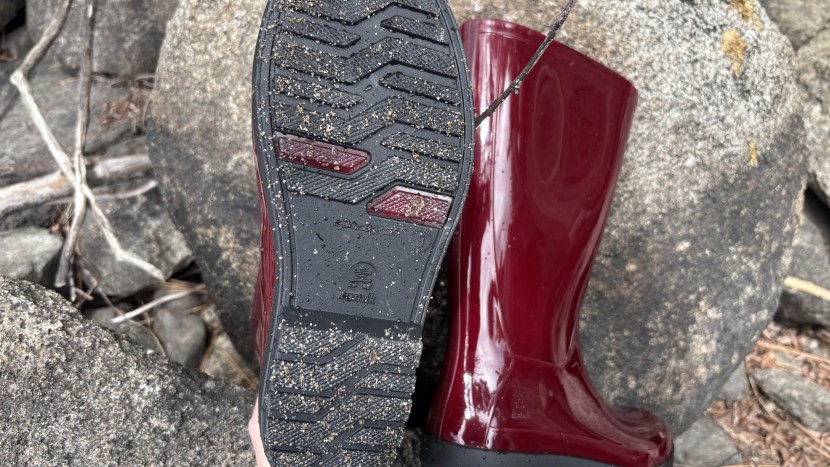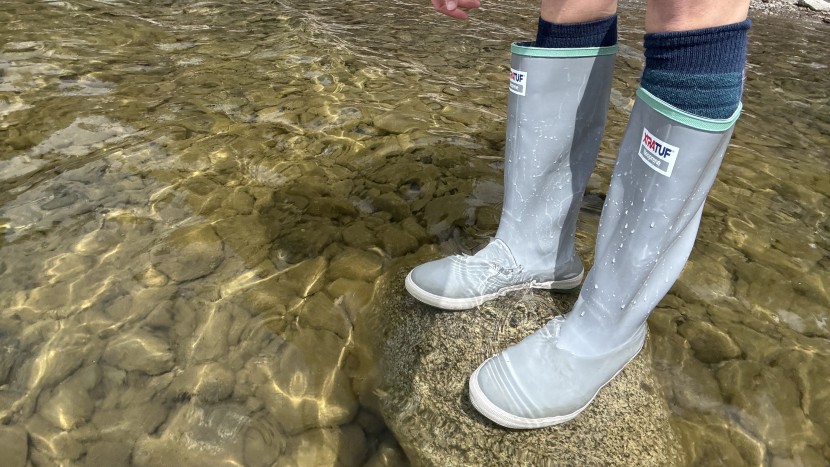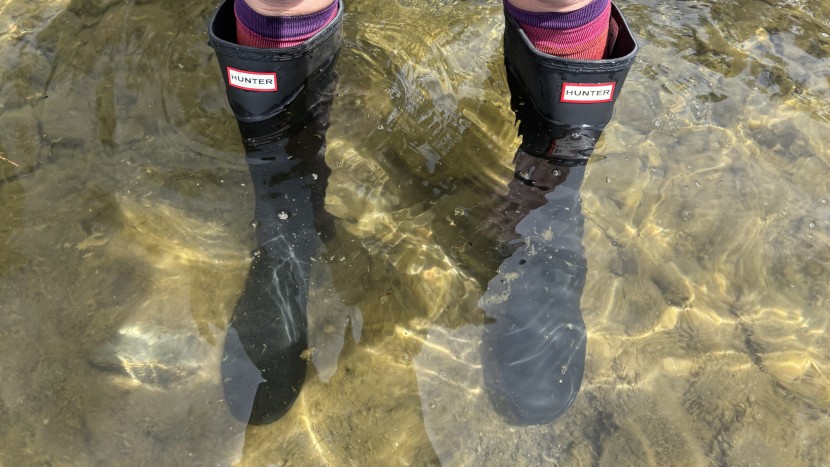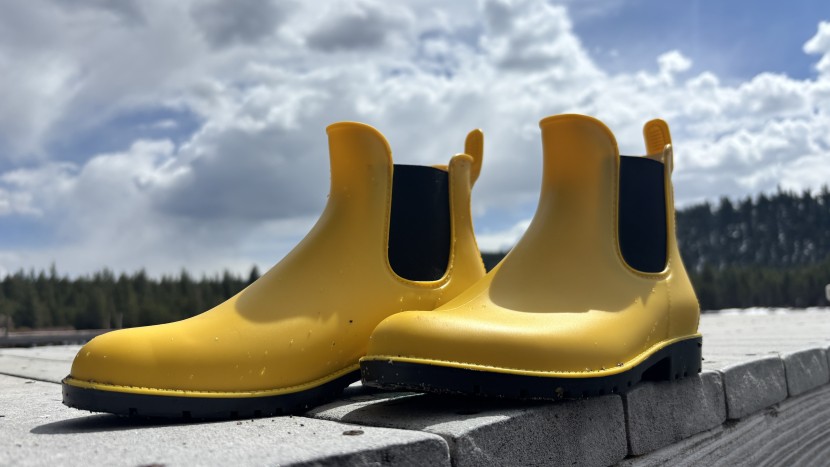Most testing took place in Colorado, California, and Montana. These states aren't known to produce the greatest rainfall, but have ample waterways and places to measure the rigor of rain boots. From mountain landscapes to farmsteads to canyon country, these contenders became a part of daily life, walking the dogs, tending to yard chores, slogging through snow storms, and spending ample time standing in rivers and lakes. Through rain, snow, and creek-splashing, we tested in town, in the desert, in the mountains, through rivers, and, of course, in the garden and nearby farms.
We started with the objective measurements, documented onto a single spreadsheet, such as all technical height and weight specs, materials used, and even manufacturer claims. We also read hundreds of customer reviews from top online retailers for more insight into what to look for and expect with each pair, such as odd smells out of the box or weird quirks that may develop over time.
Weather Protection
We took our boots one by one, one right after the other, through walkabouts in the snow, on wet pavement, up hills, and into rivers and creeks, noting how shaft height and circumference influenced our experience. For a long-term waterproofing test, we headed to the bathtub or sink. We had them sit in shallow water for several hours, checking for leaks in the soles (notably where they meet the upper rubber), and unfortunately, we had several pairs fail. With pairs that had nylon gussets or zippers, we also wanted to test the waterproofing of these certain design features. To do this, we raised the water levels and weighed the boots down so they wouldn't float, and noted any leakage or water absorption into the boots at these seams or zippers, which then determined a more accurate flood height. We also took the boots to a cold mountain lake and walked through the water at a depth just below the flood height, noting any leaks in the material. This test was also helpful with judging how warm and insulated the boots are.
Comfort and Fit
We tried each pair of boots out of the box to see if they felt true to size, considering whether fit was adequate with thin socks as a baseline. Then, we began to wear them out and about, and on select days, we wore them all day no matter the errands or tasks. We even wore them while watching movies and driving. We paid attention to heel lift, hot spots, and the ease of stepping into and out of each boot. We wore boots barefoot and with thick socks in a range of temperatures. Lastly, we paid attention to the weight of the boots and whether they felt cumbersome to carry, move about in, or store at home, in the car, or a bag. We scored each factor (i.e. all-day wear, fit, and mobility), then calculated the average to conclude with an overall comfort score.
Traction
For this metric, we scored performance based on how each boot did in snowy/icy conditions, in a river environment, on dry/wet surfaces, and on a wet grassy or muddy incline. Purposefully trying to find points of slippage without risking injury was exciting, but we tried our best to be as consistent as possible. We also encountered a variety of flat surfaces such as gravel, rock slab, dirt, mellow hiking trails, and, of course, the urban asphalt, concrete, and linoleum tile or plastic playground slide. We scored the performance for each type of environment and then used the average as the basis for how each boot ranked in this category.
Warmth
For warmth, performance was scored on how well the boots kept our feet comfortable in the snow and river and throughout warmer temps of 50-80F. We also noticed if the boots made our feet sweaty after a day of wear, particularly during the warmer temperatures. For another test, we stood in a river for several minutes and subjectively ranked each boot on how quickly our feet seemed to feel the cold. In the snow, we critiqued insulation quality. While most boots are not designed for true winter conditions, we took advantage of the cold temperatures to see if we could find more differences between the pairs.
Wearability
A big factor in the wearability metric is how stylish the boot is. Thus, wearability is certainly the most subjective metric. We ranked each boot on its overall design, appeal, and versatility across our wardrobes. We asked ourselves what we felt the purpose of each design was. We took note of any added features and accessories to critique whether stylistic choices compromised the integrity of what the boot was fundamentally made for. Lastly, we paid attention to comments from friends and strangers and, of course, online review comments.
Conclusion
We try our best to be as meticulous and consistent as possible. As the years go by, we add and remove boots from our testing group, which is why our note-taking is critical to maintaining accurate comparisons. It's also great to see how things change over time. Nonetheless, we strive to bring you careful and genuine testimony of what these rain boots are all about.

